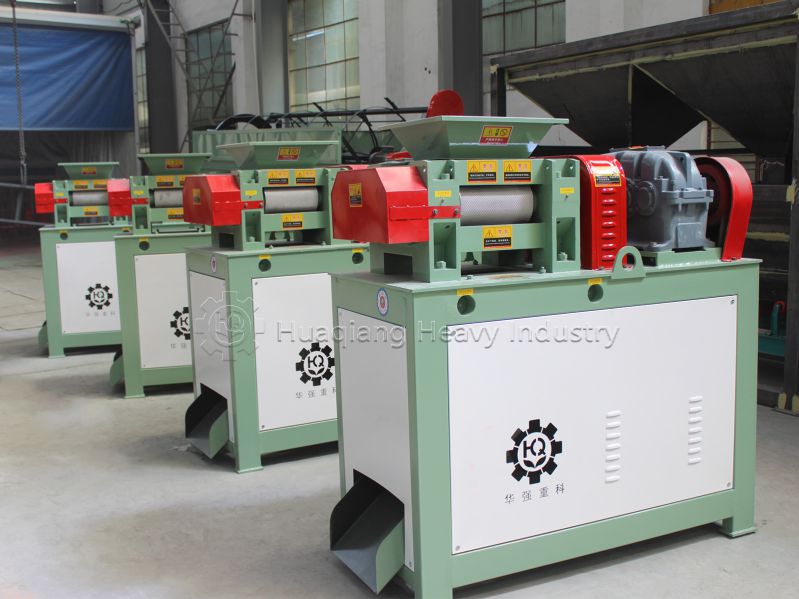
The Core Concept of Compaction Degree
In the field of fertilizer manufacturing, 95% compaction degree is a crucial quality control indicator. It indicates that the actual dry density of compacted fertilizer granules reaches 95% of their maximum dry density. This value directly reflects the compactness and internal structure characteristics of fertilizer granules. Understanding this indicator is significant for both fertilizer production and application.
Compaction degree essentially measures how tightly fertilizer granules are compacted. Higher values indicate fewer internal pores, denser structure, and stronger mechanical strength. 95% compaction degree is considered the “gold standard” for granular fertilizers.
Fundamentals of Understanding Compaction Degree
To accurately understand the meaning of 95% compaction degree, it’s essential to first clarify two core concepts: maximum dry density and actual dry density. Maximum dry density refers to the theoretical maximum density that fertilizer can achieve under optimal moisture content conditions through standard compaction tests – this is a theoretical limit value. Actual dry density, on the other hand, is the density actually achieved by the fertilizer during production or use.
Illustrative Analogy
The internal structure of fertilizer granules can be compared to a container filled with sand. Maximum dry density corresponds to shaking the sand to its tightest state with no voids. Meanwhile, 95% compaction degree means the sand is compacted to a state close to maximum tightness, retaining only 5% of necessary voids. This state ensures both structural stability and maintains appropriate functionality.
Practical Significance of 95% Compaction Degree
Ensuring Granule Mechanical Strength
Fertilizer granules achieving 95% compaction degree possess excellent compressive strength, typically able to withstand 15-30 Newtons of pressure. This strength level ensures that fertilizers won’t break easily during storage, transportation, and spreading, avoiding uneven application problems caused by granule breakage. If compaction degree is too low, granules break easily; if too high, granules may become too hard, affecting normal nutrient release.
Balancing Nutrient Release Characteristics
95% compaction degree retains appropriate connected pores within granules. This structure allows moderate water penetration, enabling nutrients to release gradually according to crop absorption rhythm. This balance avoids both the risk of seedling burn from too rapid nutrient release and crop nutrient deficiency from too slow release.
Adapting to Mechanical Fertilization
In modern agriculture, mechanical fertilization has strict requirements for the physical characteristics of fertilizer granules. Granules with 95% compaction degree have regular shapes and good flowability, enabling smooth passage through fertilizer equipment outlets and ensuring spreading uniformity. This uniformity directly relates to crop growth consistency and final yield quality.

Compaction Degree Requirements for Different Fertilizer Types
Although 95% compaction degree is the ideal standard for universal granular fertilizers, different fertilizer types require appropriate adjustments based on their characteristics and uses. Quick-acting fertilizers typically need lower compaction degrees to facilitate rapid nutrient release, while slow-release fertilizers require higher compaction degrees to delay nutrient release. Organic granular fertilizers also have different optimal compaction degree ranges due to raw material characteristics.
95% compaction degree represents the exquisite level of fertilizer manufacturing technology. Through precise control of material compactness, it achieves perfect balance among convenient storage and transportation, uniform application, and efficient fertilizer supply. This indicator not only reflects production technology level but also serves as an important guarantee for ensuring fertilizer application effectiveness.
Integrating Compaction Technology into Modern Fertilizer Production
The achievement of 95% compaction degree represents a critical quality milestone in modern fertilizer manufacturing, directly influenced by the selection and operation of appropriate fertilizer production machine equipment. In the comprehensive npk fertilizer production process, specialized fertilizer compaction machine units play a vital role in achieving optimal fertilizer granules compaction. The roller press granulator production line particularly excels in creating high-density products through precise fertilizer compaction technology.
While alternative technologies like the rotary drum granulator and drum granulator utilize drum granulation principles for specific applications, the dedicated fertilizer compactor remains essential for achieving superior density standards. Throughout the complete npk production line, equipment such as the rotary screener works in conjunction with compaction systems to ensure uniform particle size distribution. The advancement in npk fertilizer production technology continues to refine these compaction processes across the entire npk fertilizer manufacturing process.
For organic fertilizer operations, the integration begins with fermentation composting technology for organic fertilizer using windrow composting machine equipment, followed by granulation through innovative solutions like the new type two in one organic fertilizer granulator. The complete equipments required for biofertilizer production must address both the organic fertilizer fermentation process and subsequent compaction requirements. As npk fertilizer production line technology evolves, the precise control of compaction degree remains fundamental to producing high-quality fertilizers that meet modern agricultural demands.